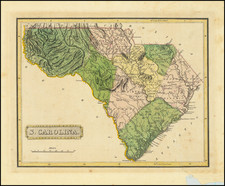Current Location of The Citadel
Hand drawn map, showing property on the east side of the Ashley River, on Charleston Neck, immediately to the west of the Washington Race Course (1792-1900).
The property shown would seem to be the present location of a portion of the campus of The Citadel, Roughly the location of Wilson Field, Deas Hall and Thompson Hall, Vandiver Hall and McAlister Field House. The Citadel campus would not be moved to its current Ashley River location west of Hampton Park until 1918.
Places shown on the property include stables, a brick house, graves, and a pond. The names of other land owners shown on the map include:
- Farm of R. Yeadon Esqr.
- Farm of Mr. Rehett
- S. Izard
Washington Race Course
The early history of the Washington Race Course in Charleston is deeply rooted in the cultural and social fabric of the antebellum South. Founded in 1792 by prominent figures such as William Alston and William Washington, the racecourse was situated on a portion of The Grove farm on Charleston’s upper peninsula. It quickly established itself as a premier venue for horse racing, a sport that was both a pastime and a symbol of status among the Southern elite.
The Washington Race Course was readied in time for its inaugural event during Race Week in February 1792, featuring the main event, the Jockey Club Purse, which was a series of four heat races. Throughout the early 19th century, the racecourse became the social hub of Charleston during the racing season, which culminated annually with Race Week. The event attracted various members of society, from the plantation aristocracy to merchants and visitors. It became a melting pot of sorts, where different classes mingled, though there were clear demarcations of social status and segregation.
The Washington Race Course was also the site of slave auctions were conducted at the track.
The track was used until the the late 19th Century, at which time it was deeded to the Charleston Library Society. It was the location of the South Carolina Inter-State and West Indian Exposition. After the exposition, the land was sold the land to the City of Charleston. The track is now the site of Hampton Park.









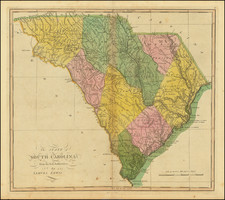
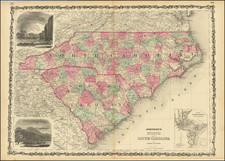
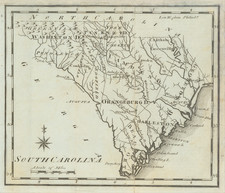
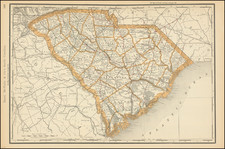
![North and South Carolina [with plan of Charleston]](https://storage.googleapis.com/raremaps/img/small/103044.jpg)
